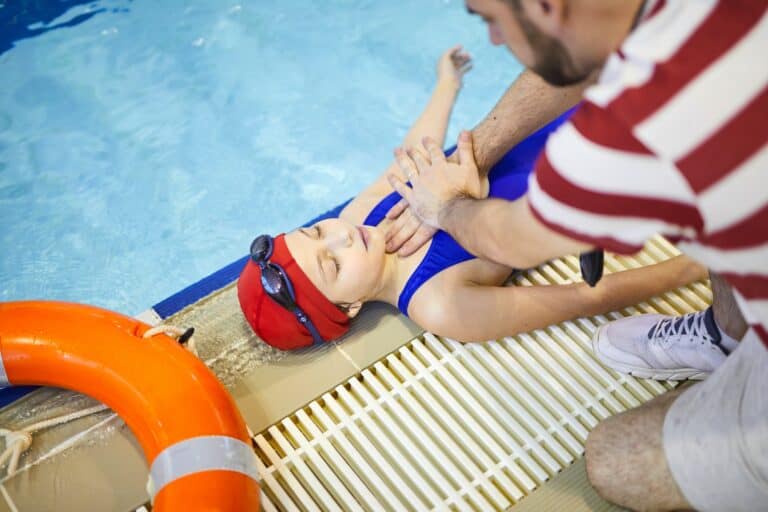With spring on our doorstep, it is important to be vigilant about water safety to help halt the rising number of fatal drownings in Queensland every year. As the weather warms up children will become more adventurous, heading outdoors more often to explore, and often being attracted to water.
Children have very little knowledge of the danger that pools pose and due to their physical build and lack of balance they are at higher risk of falling into a pool.
It can take 20 seconds for a child to drown, so with that in mind. Let’s talk pool safety.
Pool Safety Laws in Queensland.
Pools safety laws were introduced in Queensland in 2009 with a purpose to safeguard children from drowning or injury in pool areas. The law applies to all pools in Queensland and failure to comply with relevant laws can not only lead to death or injury but can also carry a fine.
All pools in Queensland must be fenced and registered with the pool safety register. Failing to register your pool or spa can lead to a fine of up to $2356.
Pool Fences and Barriers
It is imperative that pool fences and barriers comply with Queensland Development Code MP 3.4—Swimming pool barriers (PDF, 5.4MB). If you are the owner of a pool, you must maintain fences and barriers to prevent children from drowning or being seriously injured.
Queensland pool owners, must ensure:
- your pool fence is essential to stop children drowning.
- pool fences or barriers are well maintained.
- damaged fences or barriers are repaired immediately.
Safety Certificates and Inspections:
All pool owners in Queensland are required to have a valid pool safety certificate. A pool safety inspection must be conducted by a licenced pool safety inspector in order to obtain a certificate.
Pool Safety Inspections should include:
- Clear and accurate reporting.
- Compliance with government’s standards.
- Certificate lodgement with government within 24 hours.
CPR
Pool owners are required to have a cardiopulmonary resuscitation (CPR) sign displayed near a pool. A CPR sign can save lives and by law, you must display a CPR sign to achieve a pool safety certification.
CPR signage must be:
- Displayed near the pool and easily visible for a person near the pool to see.
- Made of a weatherproof material that is durable.
- Be a minimum of 300mm by 300mm in size.
- be attached securely to the safety barriers or fence of the pool.
- comply with ‘ANZCOR Guideline 8 – Cardiopulmonary Resuscitation’ (PDF, 297KB)
Drowning can happen quickly, silently, as fast as 20 seconds and in just a few centimetres of water. Research suggests that a large number of drownings in pools are a result of faulty or non-compliant pool barriers and the absence of an active supervisor.
Here are Some Key Messages for Prevention.
SUPERVISION:
- Always keep your eyes on children around water and don’t be distracted by your phone.
- Remain within arm’s length of toddlers in case something goes wrong
- Never leave children in a pool area alone if you leave.
REDUCE HAZARDS:
- Regularly maintain and inspect your pool fencing and gate.
- Do not prop any gates open that will allow children access to the pool area.
- Do not leave any chairs or other items near pool fencing that a child may be able to climb up on.
WATER AWARENESS AND KNOWLEDGE:
- Swimming lessons can teach children to swim as well as helping them with water awareness.
- Learn CPR and keep it up to date so you know what to do in case of an emergency.
- Have a current CPR poster.
Non-fatal incidents around pools are also a concern as they can cause long term effects. If you or anyone you know have had an incident around a pool area you may be entitled to compensation. Call us today on 1300 695 299 to speak with one of our friendly team members for an obligation free case assessment.

